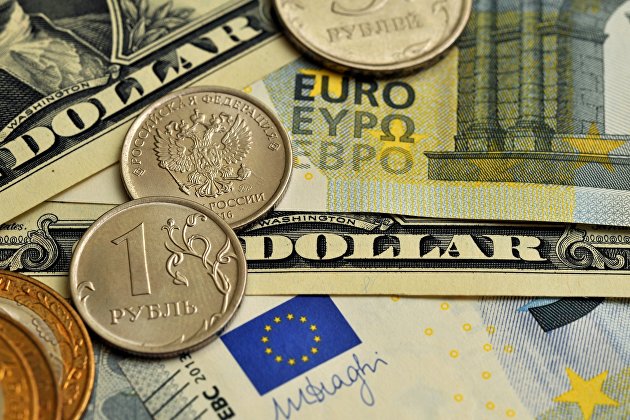
Russian importers of electronics abandoned the dollar and euro
By Rhod Mackenzie
Russian electronics importers have stopped using dollars and euros for payments and are now using currencies such as yuan and dirhams from friendly countries, according to news reports. This has helped to avoid price increases for equipment and, in some cases, even reduce prices. These currencies can be easily bought, exchanged and transferred without any issues, unlike Western currencies. Importers are able to save on exchange rate differences as a result. According to market participants, it may be possible to make purchases using cryptocurrency in the future.
Russian importers of electronics have largely stopped using dollars and euros to settle payments with foreign vendors and distributors. One electronics manufacturer manager informed Izvestia of this development. He stated that last year, most electronics purchases entering the Russian Federation were paid for using Chinese and Indian banknotes, as well as currencies from other developing countries.
“In 99% of cases, we use the ruble, yuan, dirham, won, and dong,” says one of them. This has advantages such as no traceability risks for shipments, no correspondent banks from unfriendly countries, fast currency circulation, and fewer intermediaries during deliveries.
Distributor diHouse stopped using the euro and dollar for payments in 2022, according to its financial director Zhanna Romanchenko.
At present, we use the ruble, yuan, dirham, and rupees. This has the clear advantage of preventing payment from being frozen and allows for more favourable conversion rates during settlements. As a result, both the supplier and the buyer benefit. Fewer costs will be included in the final price of the product,” she notes.
This benefits not only importers but also buyers. According to a source close to the company, who is a partner of several electronics manufacturers, the payment system provides the Russian market with in-demand goods.
MTS noted that they have not abandoned the use of dollars and euros, but they also accept other currencies, such as yuan, for payments. The main trend of the last two years has been the increase in transactions using monetary units of different countries, according to a company representative.
In developing our import operations, we aim to use the most optimal payment methods and multi-currency agreements without relying on dollars or euros for payments. For instance, we make purchases in rubles, yuan, dirhams, and other 'soft' currencies,' M.Video-Eldorado informed the newspaper Izvestia.
According to an Izvestia source at an electronics manufacturing company, payments for supplies are no longer limited to traditional fiat currencies. Since the end of 2023, some Russian financial institutions have offered their intermediation to distributors for settlements with foreign counterparties in cryptocurrency. The source declined to name specific credit organizations.
According to a participant in the electronics market, small sellers are already using cryptocurrency as a form of payment. However, the source doubts that large retailers will adopt this payment method in the near future due to the need for a legislative framework.
Two other participants in the electronics market previously informed Izvestia that importers have started to reject payments in dollars and euros for electronics. They estimate that in the second quarter of 2023, approximately 50% of gadgets were purchased using yuan. One of them noted that this is often the only opportunity to pay for supplies quickly and without problems.
Wholesale buyers of equipment sometimes refuse dollars and euros due to difficulties in purchasing them in sufficient quantities within Russia and transferring them abroad because of Western bank sanctions. Eldar Murtazin, a leading analyst at Mobile Research Group, explains. The savings from using the currencies of friendly countries, particularly the yuan, are small - about 1%. However, the fact that the cost of purchases does not increase when changing settlement currencies is positive for both sellers and buyers of equipment. Additionally, this money can be easily exchanged and transferred, and then converted back into dollars outside of Russia. This allows you to avoid shortages, failures in the payment system, and logistics.
In the current situation, abandoning the euro and dollar is not the main concern. The ruble is gradually gaining importance in cross-border payments. It can be converted into other financial assets, used for savings, and spent with ease. This strengthens Russia's position in international markets, as stated by the expert. Confidence in the ruble is increasing.
According to Mobile Research Group, 33.5 million smartphones were sold in the Russian Federation in 2023, compared to 31.5 million the previous year. The average price of these devices increased from 23.8 thousand rubles to 24.9 thousand rubles. However, prices for high-end devices are decreasing. For instance, according to Izvestia, within a month of the unofficial release of the new iPhone 15 in Russia, its price dropped by 15-28%, depending on the model and storage capacity.
The decrease in prices of high-end smartphones suggests intense competition among sellers. According to TelecomDaily CEO Denis Kuskov, vendors used to regulate the import of devices, but after they left Russia, there was no one to do so. As a result, everyone imports and sells as much as they want.
Kuslov points out that the transition to alternative currencies ensures that prices do not rise. This is because the ability to quickly pay with these currencies makes imports predictable and avoids shortages. Additionally, importers save on transaction costs as they no longer need to convert rubles into euros or dollars and then into other currencies, which partly restrains price increases.
